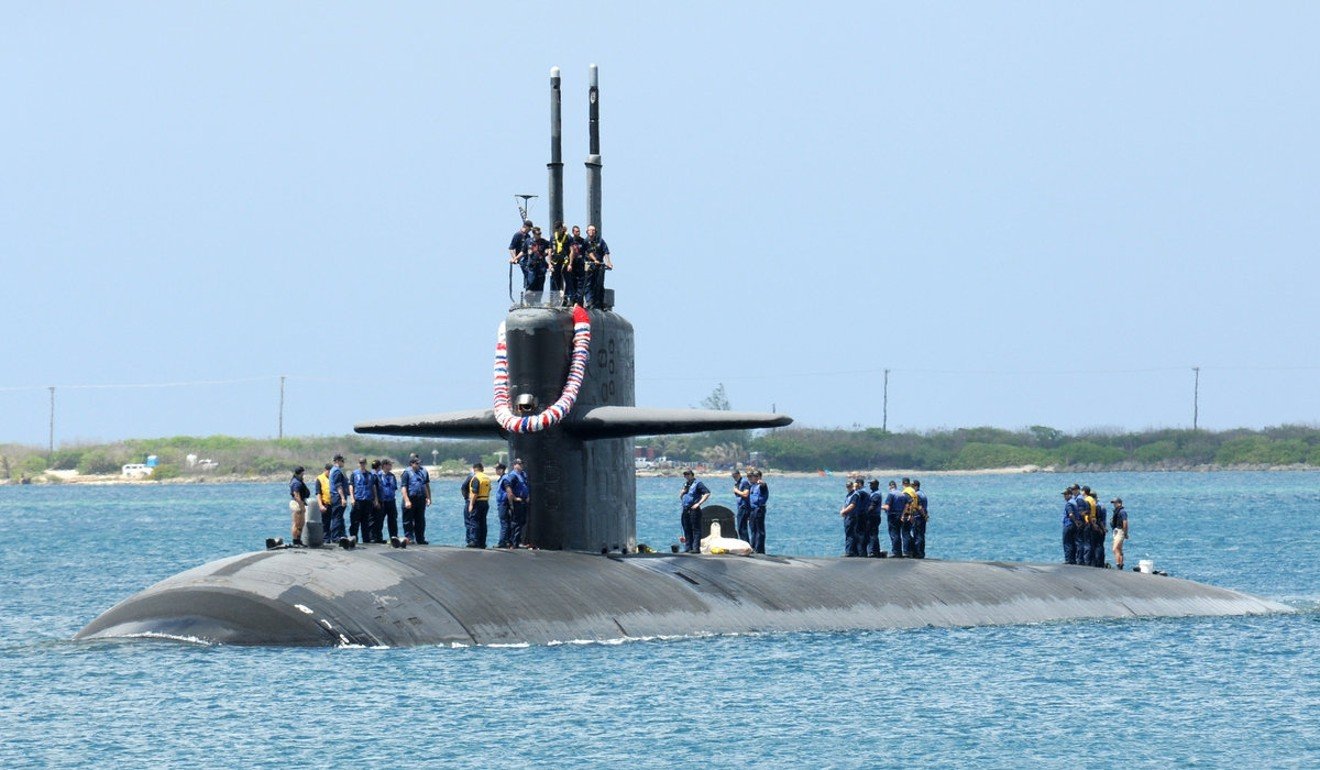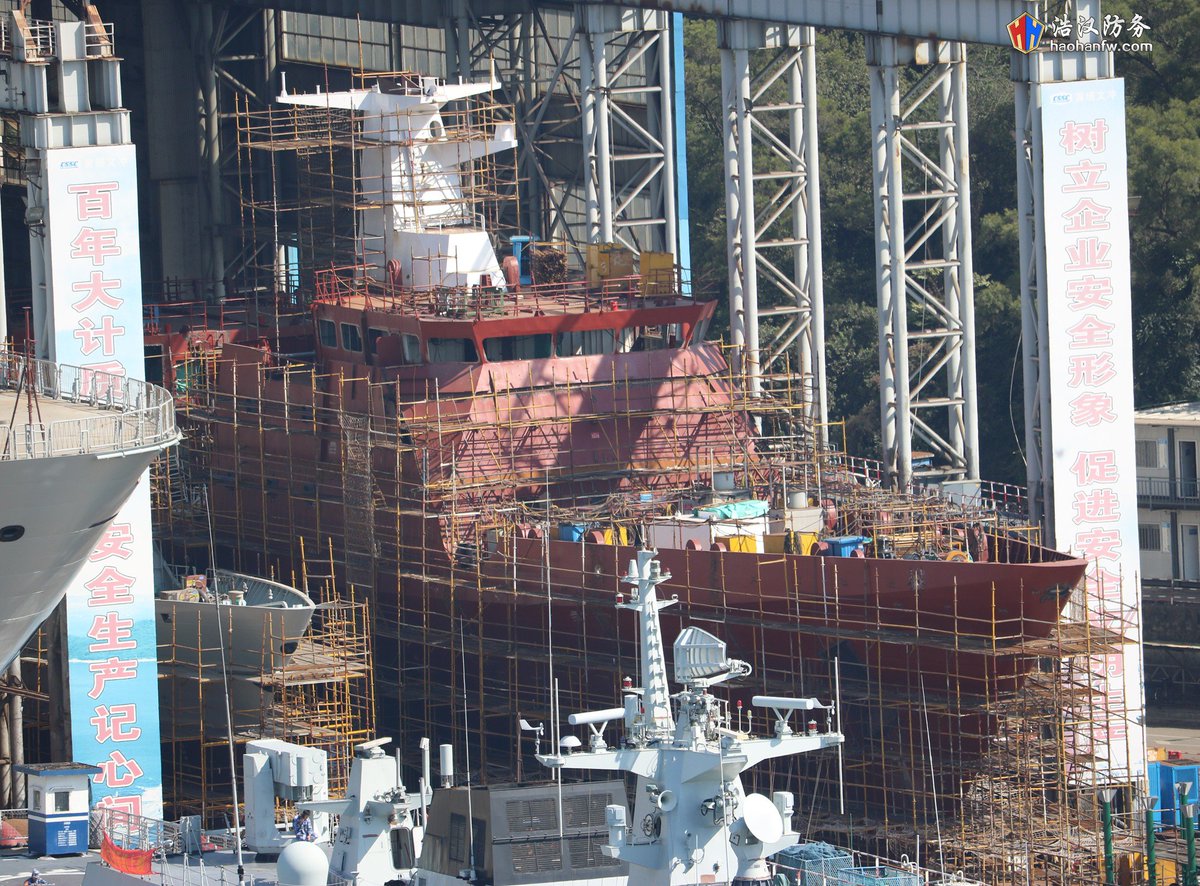Acoustic sensors in waters near US military base in Western Pacific are ‘standard practice’ for monitoring submarine traffic, US analyst says
China has planted powerful listening devices in two strategic seabeds deep in the waters near Guam, America’s biggest military base in the Western Pacific.
The cutting-edge acoustic sensors – some of which have a listening range of more than 1,000km – are being used for scientific research such as studying earthquakes, typhoons and whales, according to the Chinese government.
But security experts say the sensors can also track the movement of submarines in the South China Sea and intercept underwater signals between the submarines and their command base.
The high-end surveillance devices have been in operation since 2016, though the information was released by the Chinese Academy of Sciences only this month.
One of the acoustic sensors is located in the Challenger Deep of the Mariana Trench – the deepest place on Earth at 10,916 metres beneath sea level – and another is near Yap, an island in the Federated States of Micronesia, the information revealed.
The Challenger Deep and Yap are respectively about 300km and 500km southwest of Guam, between Guam and Palau.
Guam is home to the United States’ biggest military base in the Western Pacific and it is also an important resupply and maintenance centre for the submarines of other US naval forces in the Pacific region. Palau is one of the main entry points to the South China Sea for US naval vessels.
Highly advanced sound detectors planted on the sea floor in the region might be able to detect submarines’ communication, according to a Chinese military expert who asked not to be named due to the sensitivity of the matter.
The content of the messages would be encrypted, but the signals could provide other useful information about the submarines, the expert said.
A US analyst said such a move was standard practice for big powers with strong navies.
“China has become a great power and is acting like one,” said James Lewis, senior vice-president at the Centre for Strategic and International Studies in Washington.
“All great powers put sensor arrays at the bottom of the ocean for anti-submarine warfare.”
According to the Chinese academy, which oversees the development and deployment of the acoustic sensors, the devices are attached to a long cable along the sea floor.
The cable is connected to a small buoy carrying satellite communication devices and supplying more than a year’s worth of battery power to the devices, which are small and consume very little power.
These Chinese deep-sea surveillance networks have survived the crushing pressure at the world’s greatest depths and picked up noises from sources over 1,000km away, according to the academy.
They are regularly maintained by Chinese research vessels, it added.
The eavesdropping instruments work by picking up sound waves, which can be used as military intelligence. The sound waves may include noises generated by submarines.
Submarines often generate low-frequency noises meant to travel across long distances. They also regularly beam acoustic signals to either satellite-linked buoys or cables on the sea floor to communicate and remain in contact with their bases.
The US naval base in Guam hosts the Submarine Squadron 15, whose fleet comprises Los Angeles-class nuclear submarines including the USS Oklahoma, USS Chicago, USS Key West and USS Topeka.
From Guam, the fastest way for a submarine to reach the Spratly Islands, for instance, is to go through the Celebes Sea between Indonesia and the Philippines. The 3,500km journey would take less than four days for a nuclear-powered submarine.
The Spratly Islands are a contested chain of islands in the South China Sea and a potential flashpoint in territorial disputes.
The US naval force on Guam is believed to have laid down communication lines on its submarines’ frequently used routes. The cables on the sea floor are connected to devices that can emit or receive sound waves, allowing submarines to stay in touch with the ground command without having to surface for satellite communication and risk exposure.
The US navy has also since 2008 developed a submarine communication system, Deep Siren, which allows subs to release an expendable buoy to the surface and use acoustic signals to send and receive messages from the deepest ocean floors. These signals are sent to a satellite controlled by the US National Security Agency and then integrated into its global information grid.
China’s underwater surveillance network can detect such communication as some of its sensors operate at depths similar to those of Deep Siren. The sensors have a maximum working depth of over 12,000 metres, which allows them to work effectively on even the deepest sea floors.
“The deeper under the surface, the quieter the world becomes, and it allows us to concentrate on the signal we most want to hear,” said Zhu, who leads programmes on deep-sea surveillance and communication at the Chinese academy’s Institute of Acoustics.
He added there was an export embargo to China on sound detectors with operational depths beyond 1,000 metres. Such devices were difficult to produce as they required special materials and sophisticated technology to ensure they could continue collecting accurate information for long periods under extreme, high-pressure environments, he said.
For instance, beyond a depth of 10,000 metres, the pressure a sensor is subjected to is about 6,000kg – equivalent to the weight of an adult African elephant.
The sensors are also small and consume very little power. Zhu could not reveal further details of how the sensors are made due to the sensitivity of the matter, but said “it is a breakthrough for China”.
According to the institute, the acoustic sensors in the underwater surveillance system are used to monitor sound waves generated by nature, such as typhoons and earthquakes for disaster warning purposes.
They have also been used in other ways such as on deep sea gliders and deployed in other sensitive waters like the South China Sea, the institute said.
The surveillance system includes other sensors, such as current meters and sondes that measure water turbulence, temperature and salinity.
Lewis, the US analyst, said water temperature, salinity and other factors affected the propagation of sound and were measured to improve detection of submarines.
Some sound frequencies travel great distances underwater, and advanced computing programmes can interpret them to locate a submarine even more than 800km away, he said.
“You want the sensor in deep water as it can pick up more and is less likely to be detected,” he said, adding that US sensors were mainly located around Russia to help detect their ballistic missile submarines.
The Chinese academy’s release of information about China’s deep-sea surveillance network comes amid an increasing power play against the US for dominance over the Pacific Ocean.
China, the world’s second biggest economy, has been spending generously on military hardware upgrades to assert its growing global interest and influence.
Its increasing activities near Guam have drawn US attention. Scientists on board Chinese research vessels told the
South China Morning Post that their operations near Guam had been going on in clear view of US spy planes but they continued with them, insisting they were operating in international waters.
But China’s activities in the area go further than listening devices. Last February, the academy’s Institute of Geology and Geophysics set off a series of man-made earthquakes on a sea floor of the Mariana Trench with powerful blasts. The first such experiment conducted in the region, it allowed China to obtain valuable information about the undersea terrain, the institute said.
Guam is part of the Second Island Chain, a military defence line built by the US during the cold war to prevent communist expansion into the Pacific Ocean.
According to Chinese scientists involved in these projects, one main purpose of Chinese operations near Guam and other regions in the Western Pacific is to break up the island chain and project Chinese naval power into the Pacific heartlands.






